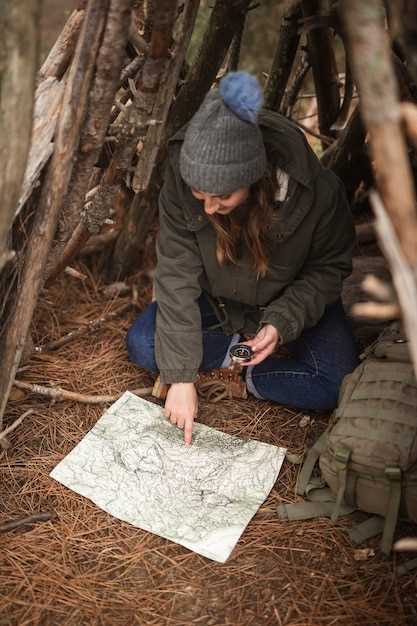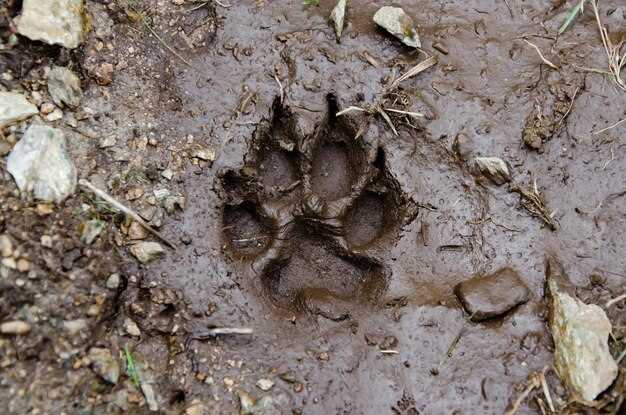
Identifying animal tracks is a crucial skill for any hunter seeking to enhance their understanding of wildlife behavior and improve their chances of a successful outing. The presence of tracks serves as a clear sign that specific species have traversed the area, providing essential information about their habits, movements, and even their recent activities. By closely examining these signs, hunters can uncover patterns that might indicate the best times and places to set their sights.
Tracks can reveal much more than just the type of animal that passed by. Each footprint carries with it a story of the animal’s size, age, and health. For instance, determining whether a track is fresh can indicate how recently an animal has been in the vicinity, while the depth and clarity of the print can suggest the animal’s weight and condition. By honing the ability to read these signs, hunters can not only increase their effectiveness but also develop a deeper connection to the wildlife they seek to understand.
Moreover, being attuned to animal tracks fosters a greater appreciation for the ecosystem as a whole. Observing how different species interact with their environment through their markings encourages hunters to adopt more ethical practices, ensuring a sustainable balance between human activity and wildlife conservation. Understanding tracks is not just about the hunt; it is about respecting the intricate web of life that exists in the wild.
Identifying Common Wildlife Tracks in Your Area
Understanding the wildlife tracks in your area is essential for effective hunting. Recognizing specific signs left by animals can provide valuable insights into their behavior, movement patterns, and feeding habits. Here are some common tracks you may encounter.
Deer Tracks: The tracks of deer are typically heart-shaped and consist of two pointed hooves. They measure about 2 to 4 inches in length. Look for these signs in forested areas or near water sources, particularly where they might gather to graze.
Rabbit Tracks: Rabbit tracks are distinctive for their small size, measuring roughly 2 to 3 inches long. The front feet show four toes, while the larger back feet typically leave an impression in a two-by-two pattern. These signs are often found in grassy or brushy areas where rabbits feed.
Fox Tracks: Fox tracks are characterized by their elongated shape and show four toes without claws clearly visible. The prints usually measure about 2 to 3 inches in length. You can often find these signs near trails where foxes hunt for small mammals.
Bear Tracks: Bear tracks can vary significantly in size, usually between 6 to 8 inches long. They have five long toes, and its large, round shape leaves a noticeable impression in soft ground. Look for these signs in forested areas, especially near berry bushes or streams.
Squirrel Tracks: Squirrel tracks are small and have four toes on the front feet and five on the back. These tiny prints measure about 1 to 2 inches in length. You can identify them in areas with abundant trees, where squirrels are constantly foraging for nuts.
By familiarizing yourself with these common wildlife signs, you will improve your ability to track animals and enhance your hunting experience. Observing these prints requires patience and keen attention, but the rewards of understanding the movements of wildlife in your area are worth the effort.
Interpreting Track Patterns: Behavior Insights for Hunters
Understanding animal tracks is crucial for successful hunting. The patterns left by wildlife can provide valuable insights into their behavior, feeding habits, and movement patterns. By interpreting these tracks, hunters can enhance their strategies and increase their chances of success.
Key Track Patterns and Their Meanings

- Direction of Movement: Tracks pointing in a specific direction can indicate where animals are traveling. Following these patterns can lead hunters to feeding grounds or bedding areas.
- Track Depth: Deep impressions suggest heavier animals, while shallow prints might indicate lighter or younger individuals. This information can help in estimating the size and type of wildlife present.
- Cluster Patterns: Multiple tracks closely spaced together show a congregation of animals, indicating social behavior. This can often signal breeding or feeding activities.
- Crossed Tracks: When tracks overlap, it suggests that different species utilize the same path. This could be an indication of predator-prey dynamics or shared resources.
Specific Animal Behaviors to Note
- Feeding: Scattered tracks around a food source indicate foraging behavior, helping hunters identify prime locations for activity.
- Bedding: Tracks leading to areas of dense cover suggest possible bedding sites, crucial for ambush strategies.
- Territorial Markings: Distinct tracks with scratches or markings indicate territory establishment, providing insight into dominant individuals and their habits.
By analyzing the nuances in track patterns, hunters can decode the actions and tendencies of wildlife, tailoring their approach for greater effectiveness in the field.
Utilizing Track Signs to Determine Species Activity and Movement

Track signs are essential indicators of animal activity and can reveal critical information about the species inhabiting a particular area. By carefully observing these signs, hunters can gain valuable insights into when and where animals are most active. Each animal leaves a unique imprint, allowing for precise identification of species based on the size, shape, and pattern of the tracks. For instance, the distinct claw marks of a bear differ markedly from the rounded prints of a deer.
The depth and clarity of the tracks can provide further information regarding the animal’s weight and health, indicating whether the animal is an adult or juvenile, and if it appears to be well-nourished or in distress. Additionally, the presence of multiple tracks or a trail of signs can suggest the frequency of movement, helping hunters to pinpoint active pathways and feeding grounds. Observing the direction of travel can also reveal if animals are moving towards water sources or food locations, proving invaluable in planning an effective hunting strategy.
In conjunction with evaluating track signs, it is crucial to consider the surrounding environment. The condition of the ground, such as softness or wetness, can affect how well tracks are preserved. Recognizing changes in the substrate provides clues about recent activity levels, allowing hunters to discern patterns over time. Keeping track of these signs ensures a comprehensive understanding of species behavior, leading to more successful hunting endeavors.


